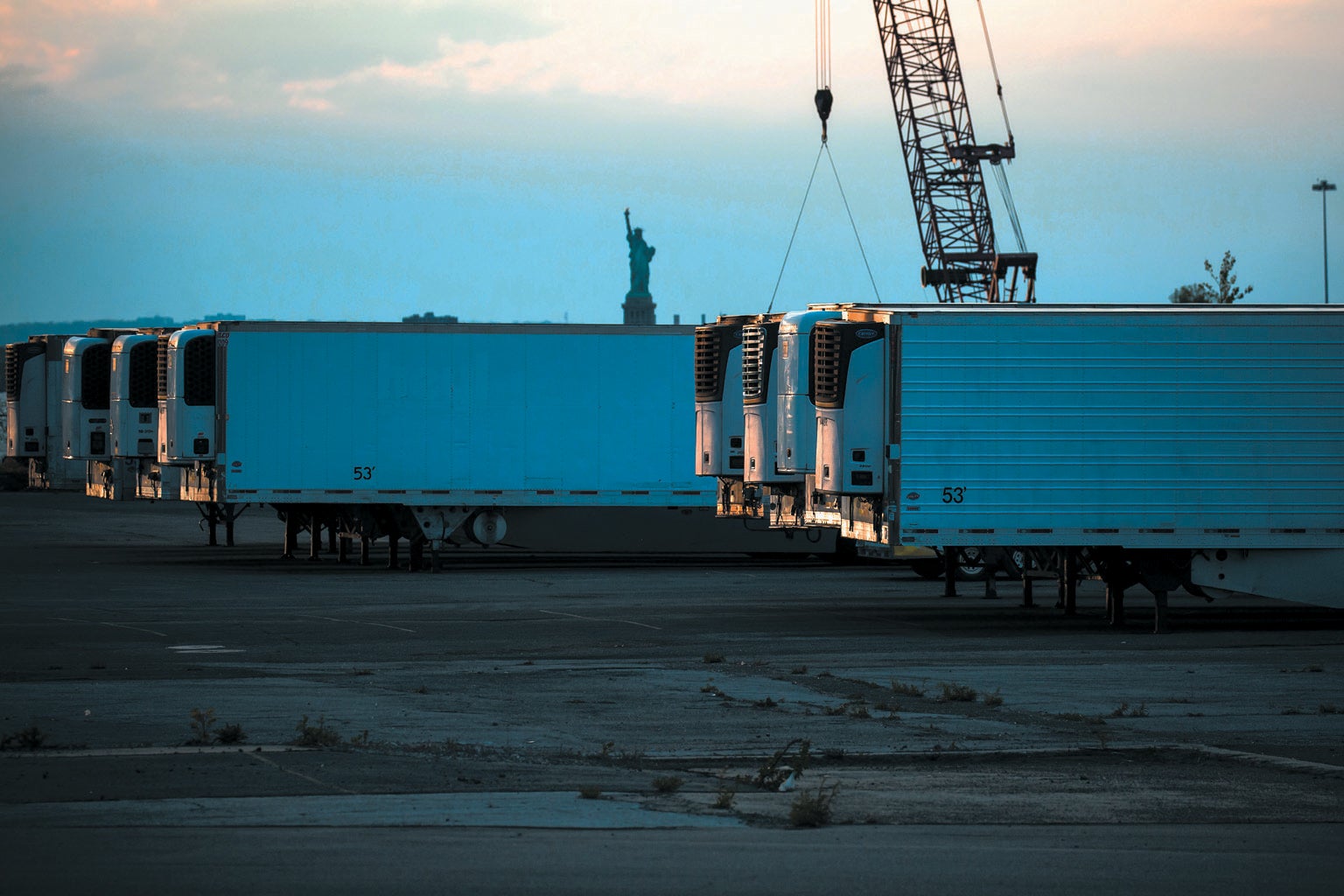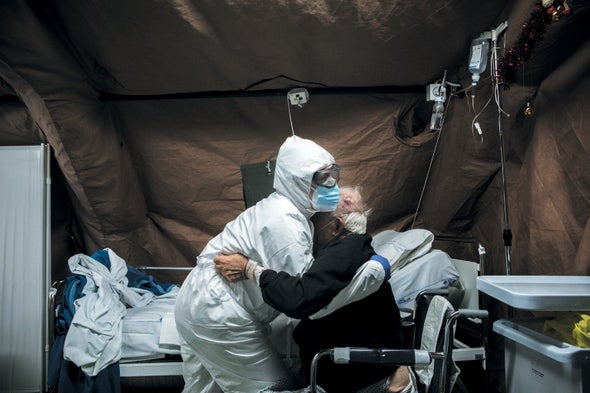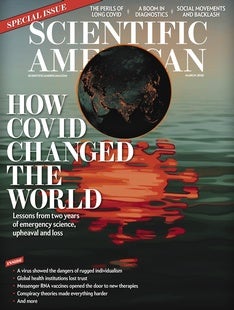Moments of existential crisis can turn into opportunities for bold reform. World War II led to the creation of transformative institutions—the United Nations in 1945 and the World Health Organization in 1948. The birth of the WHO came the same year that the U.N. adopted the Universal Declaration of Human Rights.
The COVID pandemic marks just such a moment of crisis. But instead of ushering in significant change, it has fractured global solidarity. That, in turn, has revealed deep-seated fragility in the WHO, the planet’s health leader. The WHO’s binding, governing framework for pandemic response—the International Health Regulations—has failed to serve its purpose in the face of widespread failures by national governments to comply.
But it is not too late to turn the corner. In fact, this is just the moment to ask what a bold new global public health architecture might look like.
As the U.N.’s first specialized agency, the WHO has a constitutional mandate to direct and coordinate international health, which includes advancing work to eradicate epidemic disease. No state acting alone can prevent the worldwide spread of infectious diseases. Only robust international institutions can set global norms, promote cooperation and share scientific information needed to respond to disease outbreaks. As a result, the WHO’s role remains indispensable. With vast and growing global interdependency, intercontinental travel and mass migration, the realities of globalization and climate change have fueled a modern era of new diseases. The list includes three novel coronaviruses—SARS-CoV, MERS-CoV and SARS-CoV-2—and, of course, Ebola and Zika.
WHO director general Tedros Adhanom Ghebreyesus has been the world’s conscience throughout the COVID crisis by urging global cooperation. But his pleas have largely been ignored by nationalistic leaders taking a stance of “my country first.” Global dysfunction reached a pinnacle when President Donald Trump formally announced the U.S.’s intent to withdraw from the WHO. (President Joe Biden reversed this decision on his first day in office.) Yet Trump’s was only one of many dysfunctional nationalistic responses, which ranged from near-total border closures to the hoarding by rich countries of personal protective equipment, oxygen and vaccines. The WHO was powerless to stop any of it. Even the agency’s vaunted scientific expertise came into question, as it was embarrassingly late in recommending masks or acknowledging asymptomatic and aerosolized spread of the virus.
It is tempting to simply create an entirely new international health organization, but that would be a serious mistake. It took a world war to build political consensus to establish a global health agency with vast constitutional powers. Every country on Earth is a member except Liechtenstein and Taiwan (the latter left out because of the U.N.’s “One China” policy). The WHO helped to lead the efforts that brought about the eradication of smallpox and the near eradication of polio, among other crowning achievements. Instead of giving up on the agency, we should use this moment, and what political consensus we have, to prepare the organization for future pandemics—and what remains of the current one. This goal can be accomplished with robust funding and a bold new international agreement.
It has become painfully obvious that there is a major disconnect between what the world expects of the WHO and its capacities and powers. Consider its funding: The WHO’s next Biennium Budget (for 2022 and 2023) is $6.12 billion, less than those of some large U.S. teaching hospitals and one fifth of the budget of the Centers for Disease Control and Prevention. As long ago as 2011, the WHO’s report on the H1N1 influenza pandemic concluded that the agency’s budget is “wholly incommensurate” with its global responsibilities. Yet the money it receives has remained roughly constant in inflation-adjusted dollars for the past three decades.
What is worse is that the WHO has control of less than 20 percent of its overall finances. That is the percentage of its budget that comes from so-called mandatory assessed contributions. The rest consists of voluntary contributions, which are mostly earmarked for donors’ pet projects. The WHO cannot set global priorities or even hire for the long term, as voluntary funds disappear after a year. A donor then may just shift to another cause. Sustainable funding requires, at minimum, doubling the WHO’s total budget over five years, with mandatory assessments making up at least 50 percent of its overall budget. Yet even these modest proposals might not pass muster, because member states insist on calling the shots as to how their contributions are used.

Beyond funding, the WHO must have enhanced powers to ensure governments work cooperatively in responding to global health emergencies. Yet the goal of enhancing the agency’s powers involves several challenges. Most countries frowned on Trump’s withdrawal from the WHO, but many agreed that he had a legitimate grievance. China’s early reporting of COVID cases was disingenuous, causing a delay of weeks before the world was alerted, and the country later blocked an independent investigation of SARS-CoV-2’s proximal origins. But what national leaders did not realize is that the WHO has no power to verify a nation’s reports or gain entry to a state’s territory for scientific investigations. These two structural weaknesses—and many more—are the subject of intense global negotiations to create a bold new pandemic treaty, perhaps taking advantage of the WHO’s power to adopt broad-based, legally defined commitments such as the Framework Convention on Tobacco Control.
With crisis comes opportunity, and the new pandemic treaty has the potential to be transformative. It should introduce momentous reforms even beyond giving the WHO power to conduct independent investigations. These provisions should include adopting a “One Health” strategy (a collaborative and transdisciplinary approach to achieving optimal health outcomes) that recognizes the interconnection among people, animals, plants and their shared environments. The most likely origin of SARS-CoV-2 is a natural zoonotic spillover, the source of more than 60 percent of emerging diseases. Separating animal and human populations could prevent spillovers—a step that could be achieved through land management, reforestation and regulation of wild animal trade and markets.
Although SARS-CoV-2 most likely reached humans through natural means, a laboratory leak at the Wuhan Institute of Virology has been posed as an alternative theory for COVID’s origins. Rigorous regulation and inspection of lab safety, as well as gain-of-function research, could help prevent the unintentional or deliberate release of novel pathogens.
Undoubtedly the rapid development of vaccines and therapeutics, including innovative messenger RNA technologies, was the greatest technological success in responding to the pandemic. But open access and sharing of data and tools, such as real-time virus samples, genomic sequencing, and results from clinical trials and other research, were often lacking. A new legal instrument negotiated under the auspices of the WHO’s constitution could provide a pipeline for channeling significant research funding to where it is needed while promoting public-private partnerships and scientific cooperation.
Perhaps most important, the COVID pandemic revealed massive divides based on race, ethnicity, sex, disability and socioeconomic status at both international and national levels. High-income countries dominated global markets in diagnostics, protective equipment, therapeutics and, especially, vaccines. The WHO and its partners designed the Access to COVID-19 Tools (ACT) Accelerator to hasten the development and production of, and equitable access to, COVID resources. Yet COVAX (the ACT Accelerator’s vaccine pillar) has badly underperformed. About 10 percent of Africa was fully vaccinated as of mid-January, compared with roughly 63 percent of the U.S. (the European Union had achieved even better coverage). COVAX could be transformative if it were properly funded and resourced and if its distribution channels were strengthened so that vaccines could be stored, transported and administered with speed and without waste.
President Biden has announced the investment of billions of dollars to expand mRNA-vaccine manufacturing, aiming for 100 million doses a month for domestic and global use. Yet this charitable-donation model is deeply flawed because donations always seem to come too little, too late. Any new international agreement must go beyond donations to plan for adequate and equitably distributed supplies of medical resources, including by securing supply chains, intellectual-property waivers, knowledge sharing and technology transfers.
I have delved into remaking global institutions, but it is obvious that we also must consider domestic public health capacities. The Global Health Security Index ranked the U.S. as most prepared for a pandemic, but the country was among the world’s worst performers. There are many reasons for this lack of success, including a collapse of public trust and deep political polarization. But the CDC’s guidance and actions—as well as those of state, local and tribal health departments—were, by any measure, weak. That agency and health departments at both state and local levels have lost considerable capacities (surveillance, labs and response) since the post-9/11 anthrax attacks. Buttressing domestic health system capacities is vital. But the CDC also erred badly in its health communications on topics ranging from asymptomatic and aerosolized spread to guidance on masks, vaccines and isolation. Its vaccine and mask recommendations, for example, changed three times in a matter of six weeks.
We are at a crucial junction in the COVID pandemic. We could simply return to the unvirtuous cycle of panic to neglect and back again. All too often, rather than building resilience during the pandemic response, we have blamed “the other,” engaging in stereotyping of racial minorities and immersing ourselves in geostrategic battles. But we could transform this crisis into a historic opportunity for once-in-a-lifetime reforms of our national and global health systems based on science, equity and solidarity.


